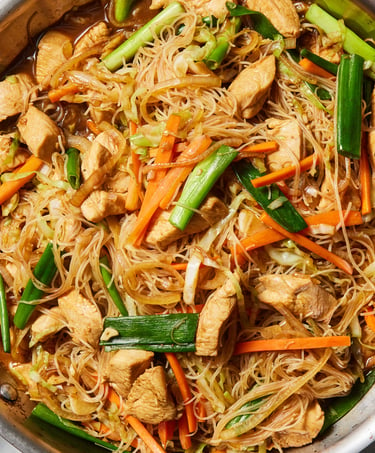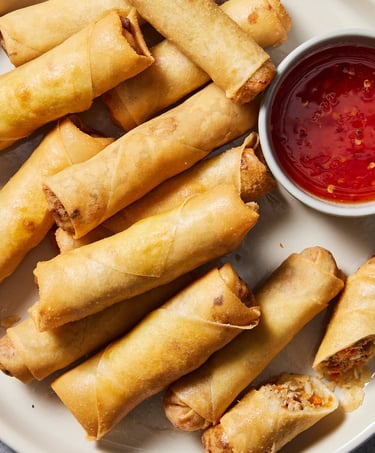Filipino Cuisine
Born in the heart of Southeast Asia yet shaped by four centuries of Spanish, Chinese, and American influences, this cuisine tells with every bite, the story of an archipelago’s endless cultural blending. Dawn breaks over breakfasts of champorado, a chocolate rice porridge inherited from colonial Mexico, while alleyways buzz at first light around carts of taho, the silken soybean dessert that traveled from China.
Family meals resurrect the grand cocinas of mestiza kitchens, where adobos simmer in their sweet-sour marinade, while village feasts exhale the aromas of lechon, whole roast pork echoing the cochinitas of the Hispanic world. Between bites of pancit canton and lumpia, one glimpses the shadow of merchant junks and Manila galleons.


This cuisine knows neither fixed schedules nor rigid rules: you might eat standing at a sisig counter as readily as you’d settle in for hours of kamayan, those feasts where bare hands pluck seafood from banana-leaf spreads. Every dish becomes an excuse to gather, to remember, to reinvent.


La richesse gourmande des Philippines :






